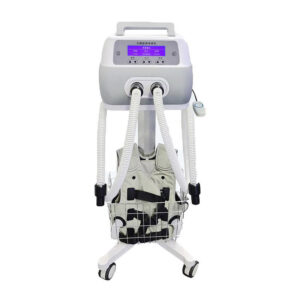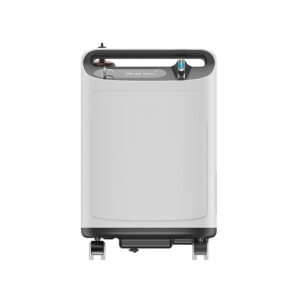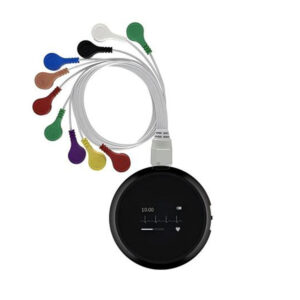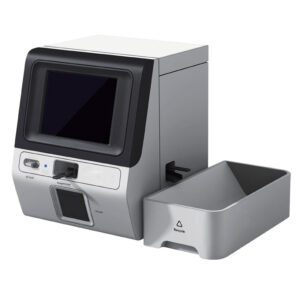A medical apparatus that utilizes high-frequency mechanical vibrations (air pressure pulses) to act on the chest wall, facilitating the expulsion of phlegm from the airways. It is primarily designed to help patients loosen and expel respiratory secretions, improve ventilation, and prevent pulmonary complications.
I. Working Principle
The main unit generates compressed air pulses, which are transmitted through an air delivery hose to rapidly inflate and deflate a vest (or chest strap) in a reciprocating manner. This delivers high-frequency vibrations to the chest wall, simulating the oscillatory motion induced by coughing. The effects include:
- Loosening Secretions: Vibrations dislodge mucus adhered to airway walls.
- Enhancing Ciliary Movement: Strengthens the rhythmic motion of airway cilia, aiding the upward movement of mucus toward larger airways.
- Improving Ventilation: Reduces blockage in small airways, increases alveolar ventilation, and leverages airflow shear forces to promote mucus expulsion.
II.Product Advantages
- Equipped with a precision-engineered, durable compression motor and exquisite circuit board craftsmanship.
- Integrated with pressure-sensitive sensors to monitor vest pressure in real-time during operation, enabling dynamic compensation to stabilize internal pressure and maintain high-frequency oscillation amplitude.
III. Indications and Target Populations
- Clinical Settings:
- ICU, Respiratory/Neurology Departments, post-operative recovery units.
- Patients with weak cough reflexes, prolonged bed rest, or inability to expectorate independently.
- Applicable Conditions:
- Chronic obstructive pulmonary disease (COPD), pneumonia, bronchiectasis with mucus retention.
- Postoperative atelectasis, prevention of ventilator-associated pneumonia (VAP).
- Neuromuscular disorders (e.g., myasthenia gravis, spinal cord injury) causing secretion clearance difficulties.
- Elderly, comatose patients, or children with ineffective cough.





















